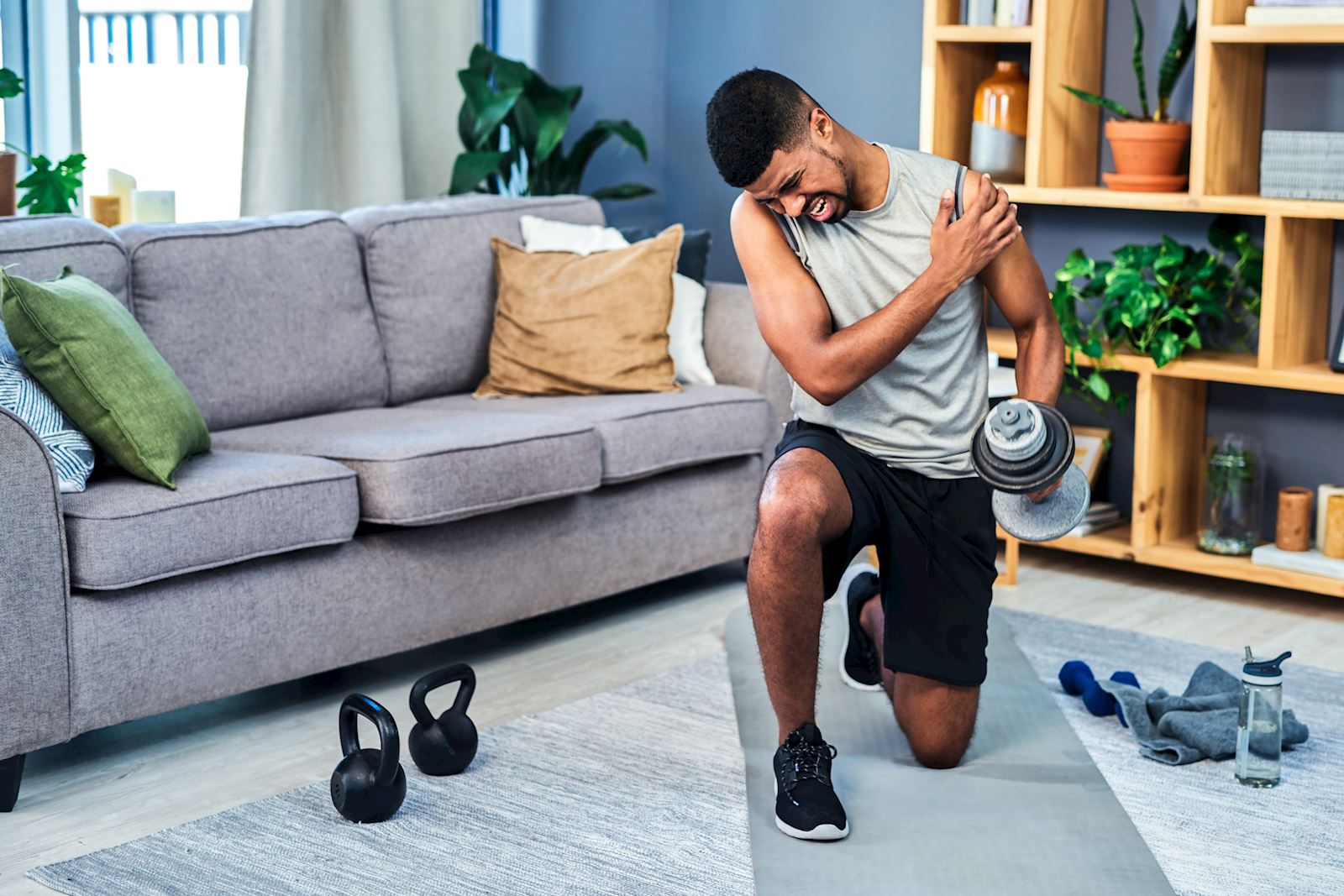Raise your hand if you’ve experienced shoulder pain.
If your hand isn’t stretched high above your head, there’s a decent chance you have a damaged rotator cuff.
Shoulder weakness is the No. 1 sign of a rotator cuff injury, says Christopher Kim, MD, an orthopedic surgeon who specializes in sports medicine. So, if you struggle to lift your arm above your head, it’s likely that there’s something wrong in this part of the shoulder.
Shoulder weakness is the common symptom across a range of rotator cuff injuries.
Like the shoulder itself, the rotator cuff is a complex set of working parts that allow you to lift and rotate your arms (hence the name). The rotator cuff is made up of four different muscles (the supraspinatus, infraspinatus, subscapularis and teres minor) and the tendons that attach them to the bone to help stabilize your shoulder joint. So you can have a problem with one or many of the muscles and suffer from the same weakness.
“People come in with similar kinds of pain and often complain of the same thing,” Dr. Kim says. “We sort out where the weakness is really coming from to figure out which part of the rotator cuff it is, and how bad it is.”
You may not easily notice the weakness yourself if, say, you can still raise up your arm. But you might feel a pain, pop or click when you move your arm a certain way or sleep on it in bed. Other times, you don’t notice it until one shoulder gives out or is noticeably weaker when you try to lift something you normally have no problems with.
Sports medicine physicians like Dr. Kim run you through a battery of tests to first identify that it’s a rotator cuff injury and not something wrong with cervical vertebra, neck, biceps or AC joint. Then they sort out the severity of the damage.
“There’s a very broad spectrum. On one end, you have impingement, bursitis and rotator cuff tendonitis. On the other end of the spectrum, there’s a full thickness rotator cuff tear. And then you have a whole bunch in between and partial tears that range from low-grade or high-grade.”
Rotator Cuff Tendonitis
The tendons of your rotator cuff can become irritated and inflamed, leading to tendonitis. It’s something that usually occurs over time, whether from sleeping on the same side of your body every night or performing repetitive motions that require you to raise your arm above your head.
“This is what some refer to as impingement or bursitis,” Dr. Kim says. “We have a bursa, which is a little fluid-filled sac around the rotator cuff that allows things to glide over each other. Inflammation can cause it to swell with more fluid, which leads to pain.”
And as you move, the space around your rotator cuff narrows. The tendons rub against other parts of the shoulder, causing more irritation and pain.
Rotator Cuff Tears
The tendons that attach the rotator cuff can also start to fray or lose their connection to the bone.
“We characterize rotator cuff tears in lots of different ways. We can define it as more the wear-and-tear, degenerative tear that happens as we get older, which is common. There are also the traumatic tears, where you have a fall or an injury. Either of these can be partial or full,” Dr. Kim says.
Partial rotator cuff tears are when there is damage, but some of the tendon is still connected. Full-thickness, or complete rotator cuff tears, are completely disconnected and look like there is a hole where the muscle should attach to the bone.
Age and repetition both wear on your rotator cuff muscles and tendons.
Traumatic tears are more common in young adults, as the result of a fall. But the majority of rotator cuff tears are of the degenerative type — the normal wear and tear your body faces over time. You’re more likely to suffer a rotator cuff tear after the age of 40. People in their 60s, 70s and 80s have a good chance of tearing a rotator cuff without even knowing it, Dr. Kim says.
With age, comes the repetition that causes these degenerative tears. By the time you’re 40, you’ve simply moved your shoulder a lot more times than through age 20. But there are other risk factors for developing a degenerative tear or even rotator cuff tendonitis.
“The non-traumatic type of tear typically happens in people who had a lot of repetitive motions with their shoulders. And that repetitive motion could be lifting heavy objects or performing manual labor where you’re constantly lifting and pulling,” Dr. Kim says. “It can actually even be repetitive desk work, like using a mouse or keyboard all day. People complain about shoulder pain with that, too.”
There are also biological, internal risk factors, he says. A history of shoulder trauma or surgery puts you at risk of a tear. So does smoking. Smokers tend to have more rotator cuff problems and more pain.
Rotator cuff pain is easy to overcome with stretches and exercises.
There’s no specific shoulder stretch, exercise or routine for you to prevent a rotator cuff injury. But that’s typically the prescription for rotator cuff problems, even up to partial tears.
“Rotator cuff treatment is so variable. Not all rotator cuff injuries are treated the same. One full-thickness tear is different from another. Partial tears are different from full tears,” Dr. Kim says. “There are a lot of factors involved, but almost always our recommendations are non-surgical. You undergo therapy with a physical therapist or do your own home exercises. And then we discuss whether a steroid injection is beneficial or not in managing your pain.”
When these more conservative treatments aren’t effective, or you suffered a complete tear, rotator cuff repair surgery is needed.
“The majority of rotator cuff surgeries are all arthroscopic. It’s a less invasive surgery but recovery from a rotator cuff repair is actually quite long. It takes much longer for soft tissue to heal back onto bone,” Dr. Kim says.
“You’re typically in a sling for about six weeks. During that time, you come out of the sling two or three times a week for physical therapy. It’s usually three months before you start any strengthening exercises — light bands and things like that. And you typically go to therapy for five to six months before continuing to improve on your own at home. It’s usually about nine to 12 months total before it’s the best you’re rotator cuff is going to get.”
Nobody wants to hear that their shoulder weakness is going to take a year of treatment and effort to heal. That’s why it’s so important to get evaluated early, Dr. Kim says.
“The longer you have symptoms, the harder it often is to treat. And the injury has progressed,” he says, “Treating a rotator cuff problem when it’s at the early stages of bursitis or tendonitis is best. People respond pretty well with non-surgical, conservative measures like injections and physical therapy.”
So as soon as you feel a twinge of shoulder pain or weakness, schedule a shoulder evaluation or visit the Bone & Joint Center to start a much shorter road to recovery.


